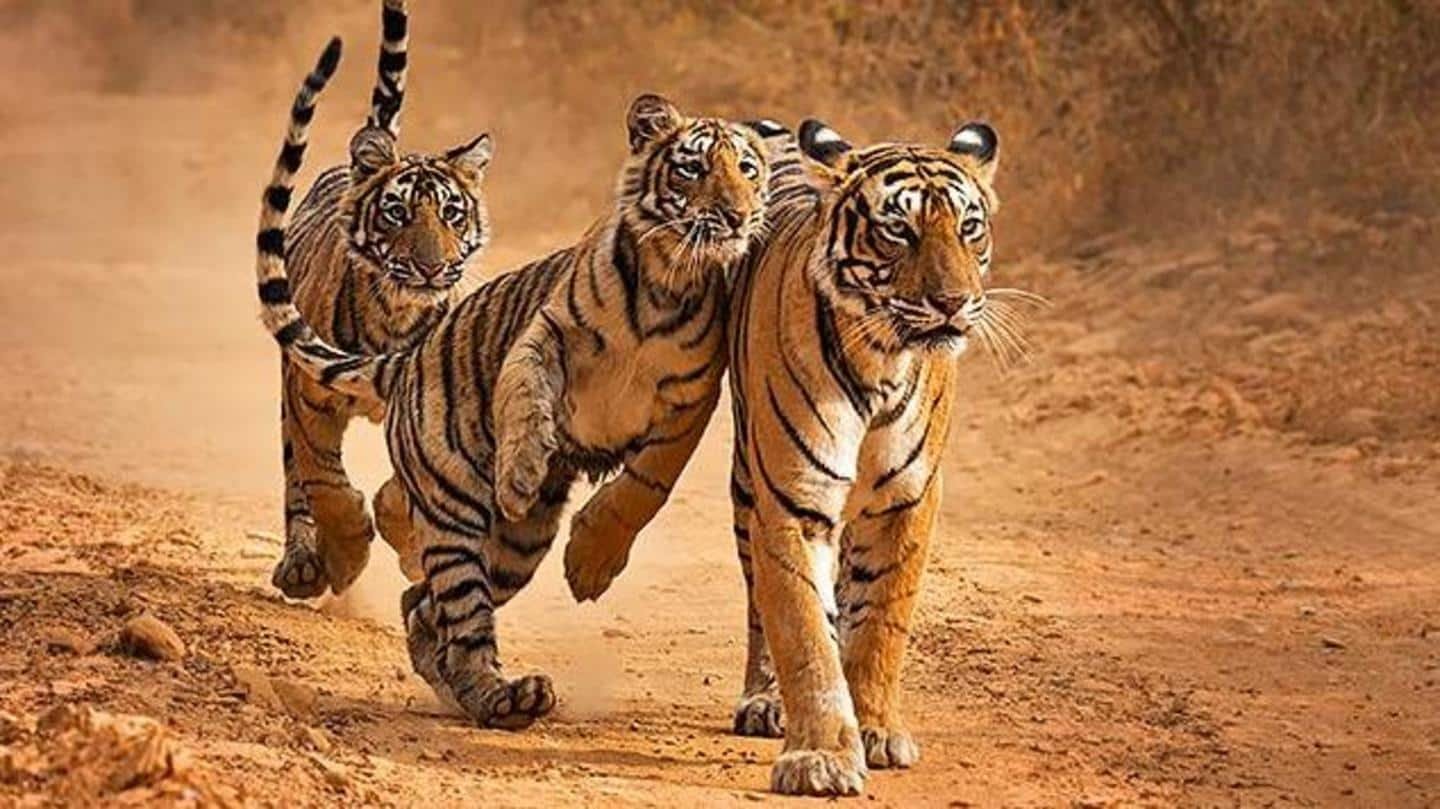
Human impact has led to another problem- inbreeding of tigers
What's the story
The population of Indian tigers continues to be fragmented by loss of habitat, leading to inbreeding and potential loss of diversity, says a new study published in the journal Molecular Biology and Evolution. "As the human population started expanding, so did their signatures on land. Some of these result in disrupting the ability of tigers to move," said Uma Ramakrishnan, co-author of the study.
Quote
Humans have pushed tigers into protected areas
According to Ramakrishnan, "Tigers have been hemmed into their protected area. Over time, this will result in inbreeding, they will end up mating with their relatives. Whether this inbreeding compromises their fitness, their ability to survive, we do not know yet."
Tiger population
Genetic diversity of tigers in India critical for global conservation
Genetic diversity across tigers' populations improves their chances of survival in the future. The study said population fragmentation can decrease this variation, and endanger them further. Very little is known about tigers' evolutionary history and genomic variation. With 70 percent of the world's tigers living in India, the researchers said understanding the genetic diversity of tigers in India is critical to feline conservation worldwide.
Findings
What do the results of the study point to?
The results of three-year-long study offer insights into genomic variation in tigers and the processes that sculpted it. Based on the results, the scientists believe there have been relatively recent divergences between subspecies, and intense population bottlenecks that may have contributed to inbred individuals. According to Ramakrishnan, maintaining structural connectivity, enabling tigers to move between protected areas can help overcome these bottlenecks.
Further research
How was the study conducted?
In the study, the scientists sequenced whole genomes from 65 tigers from four subspecies of the feline and conducted numerous population genomic analysis that quantifies genetic variability. They investigated the partitioning of genetic variation, possible impacts of inbreeding, and demographic history, and possible signatures of local adaptation. The study found that several individual tigers in the country had a low variation, suggesting possible inbreeding.
Quote
It is important to understand the consequences of inbreeding
According to the research, tigers from northeast India were the most different from other populations. "Given the results, it is important to understand why some Bengal tigers appear inbred and what are the consequences of this," said Anubhab Khan, co-first author of the research.
Information
Genomic variation needs to be studied further
The study showed recent divergences between tiger subspecies, within the last 20,000 years, which the scientists believe is concordant with increasing human impact across Asia and a transition from glacial to interglacial climate change in the continent. However, this finding needs to be investigated further with expanded data and analysis. "Population management and conservation action must incorporate information on genetic variation," Ramakrishnan said.
Information
Sampling efforts need to be increased
"Most studies use limited numbers of specimens to gain understanding into how genomic variation is partitioned. It is crucial to increase our sampling efforts and use caution when interpreting results from limited sample sizes," said Ellie Armstrong, co-first author of the study from Stanford University.